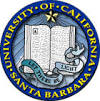Economics Department
UCSB
Home Page
News
items
European Economic Assn Disowns Elsevier's EER,
and starts new JEEA
with MIT
Press
EEA announcement
New Open Access Journal in Economics is launched (Aug
2005).
Theoretical
Economics
Elsevier's profits
Check out Morgan
Stanley's
research report
Miscellany
Weasel's
Manual
of Apologies for
Misbehaving
Monopolists
Did you think politicians had a monopoly on meretricious arguments?
Would you believe that there are two economics journals
that cost more than $8000 per year but have almost
no citations? Who are the libraries that subscribe to
them?
The Parable of the Anarchists'
annual meeting.
Why doesn't competition eliminate
excess profits in the journal industry?
Journal Pricing Page
This link includes papers that I have written or
coauthored on journal pricing and a couple of responses
from writers who disagreed with my views.
- Big Deal Contract
Project
 (updated June
17, 2014)
(updated June
17, 2014)
Together with Professor McAfee and Paul Courant of the University of Michigan, we set out to learn about the prices libraries pay for these
bundled site licenses. This was not easy, because these prices are individual to each university and are not made public. Indeed many of the contracts have confidentiality clauses that prohibit librarians from telling anyone what they paid. Fortunately most states have Freedom of Information laws that overrule these clauses in contracts with state institutions. We requested copies from state universities by invoking these state open record acts. We have collected and analyzed a large number of such contracts.
Paul Courant, Preston McAfee, and Michael Williams and I have published a paper in the Proceedings of the National Academy of Sciences that reports and attempts to interpret what we found. Here is a link to the paper. The paper is published with a paywall, but PNAS gives me permission to post a link to it on my own website, provided I also supply a link to the PNAS posting. So here is that. Tables containing most of the data used in the paper are available without a paywall at this link.
Here are links to news stories about this article from Science , Nature, The Scientist, and The Guardian.
Profiles in Sycophancy (a digression)


Evidently not everyone at my university (UCSB) thought this news fit to print. The UCSB public affairs office asked me for some material to quote in a publicity release. Their office sent me what I thought was a poorly written "first draft" of a story on our paper. To help them out, I wrote this short summary of what the paper is about.
They responded as follows. Perhaps injudiciously, I responded with a message that invokes the university's motto: Fiat Lux (Let there be light.)
I should have remembered the wise words of Homer Simpson...
"Marge, don't discourage the boy. Weaseling out of things is important to learn. Its what separates us from the animals...except the weasel."
- Databases on prices and citations in all disciplines
- Journalprices.com Preston McAfee and I maintain a database that records price per article, price per citation, and for-profit status of about 10,000 academic journals in all disciplines and classifies them as "good, medium, or bad buys".
- Eigenfactor.org I have been working with Carl Bergstrom, Jevin West, and Ben Althauser of the University of Washington, using a Google-like algorithm to construct recursively weighted citation scores for more than 20,000 journals, newspapers, and other media.
- Journal Pricing Studies for Other
Disciplines
- Carl Bergstrom and I have collected and analyzed data on journal pricing by commercial and nonprofit publishers in several other disciplines. Here you will find a discussion and data from our studies.
-
Will the problem of overpriced commercial journals be less
severe, as we move from print access to
electronic journals? What should the role of
university libraries be in all this?
-
I have pointed out before that by far the most expensive
journals in economics are two journals published by
Emerald Press. See my discussion of the P.T. Barnum List. A
librarian at Cornell has discovered some even more
remarkable wool that this publisher has been able to pull
over gullible eyes.
-
Some professional societies whose journals had been
captured and overpriced by commercial publishers have
broken away from these publishers and started new
competing journals. There is also a growing
number of interesting new reasonably priced (and sometimes
free) electronic journals.
